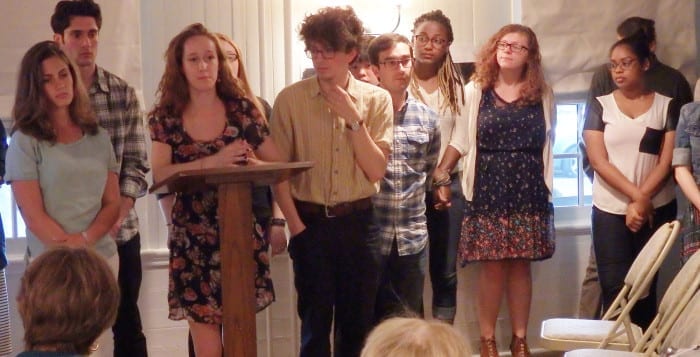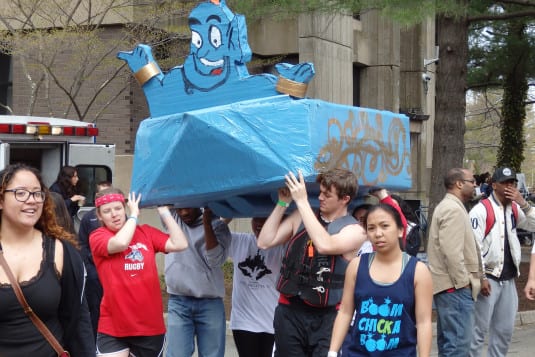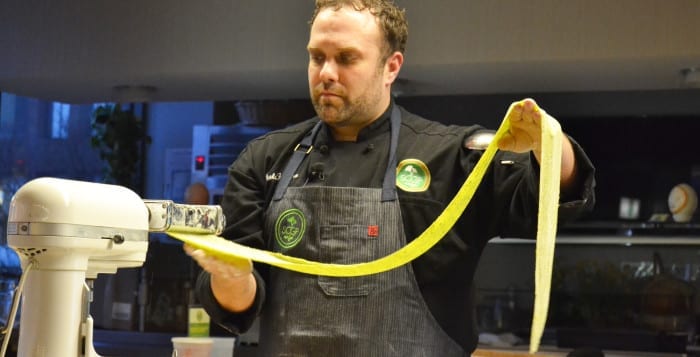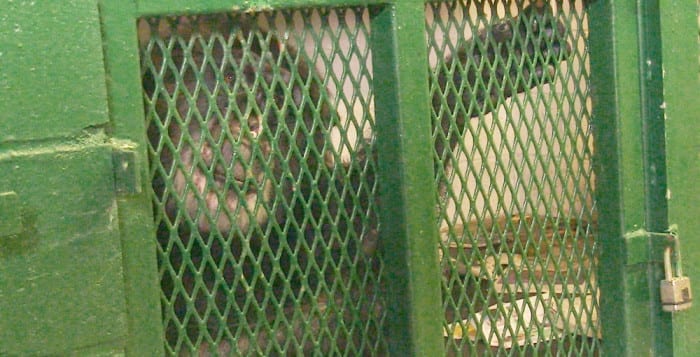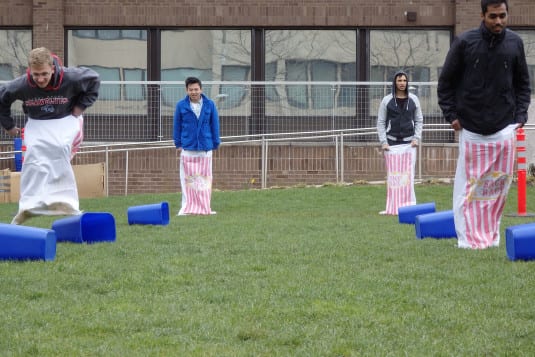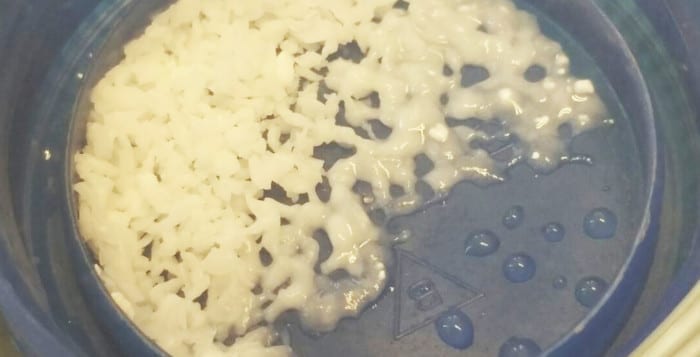Nick Fusco is still in college, but he already has a vision for the Three Village community’s de facto Main Street known as Route 25A. He and his classmates brought that vision to his neighbors Monday night to show what a little dreaming can do for the North Shore’s future.
“Our community could look like this,” Fusco said in front of a projected rendering of a reinvented Route 25A complete with greenhouse spaces, apartment housing, environmentally friendly landscaping and more. “We’ve come up with ways to improve safety, aesthetics and, most importantly, functionality.”
Fusco and about a dozen other Stony Brook University students presented at the Setauket Neighborhood House on Monday evening as part of a final project for Professor Marc Fasanella’s ecological art, architecture and design class under the college’s sustainability studies program. The conversation, “Keeping a sense of place in the Three Villages,” involved four students presenting PowerPoint slides showing off their reimaged Setauket and Stony Brook communities, utilizing existing infrastructure to help employ ecologically-friendly additions and make Three Village a community that retains young people.

“We looked at this as a tremendous opportunity for our students and for the community moving forward,” Fasanella said. “Are we dreaming? Of course we’re dreaming.”
The class built off the work of last year’s students, who brainstormed ways to bridge the gap created by the railroad tracks that separate the university from the greater Three Village community. Their proposals were met with great praise from residents, civic leaders and officials in attendance Monday. The ideas were bold, including anything from pulling buildings closer to the 25A curbside to make way for a greater “Main Street” feel to constructing a “green” multi-tiered parking garage near the train station for both retail space and commuter parking.
Shawn Nuzzo, president of the Civic Association of the Setaukets and Stony Brook, applauded the students for daring the community to take a different look at the future of Three Village. His group helped to sponsor the event alongside the Three Village Community Trust.
In an interview, Nuzzo said the Route 25A corridor, especially near the Stony Brook Long Island Rail Road station, has a long and troubled history and could use a facelift to enhance safety for pedestrians, motorists and anyone living in the area.
Nuzzo, who also studied environmental design, policy and planning at Stony Brook University, was also once a student in Fasanella’s ecological urbanism course and underwent a similar exercise in which he dreamt up projects to connect the campus to the nearby community.
“We need to have this discussion over what we want for our de facto Main Street. If we don’t decide, the developers are going to decide for us,” he said. “What do we want as a community? It starts with stuff like this.”
And the students’ visions did not fall on deaf ears, either. Brookhaven Town Councilwoman Valerie Cartright (D-Port Jefferson Station) sat attentively throughout four students’ presentations and ended the meeting with encouraging words.
She said she was working alongside Brookhaven Supervisor Ed Romaine (R) to enact a comprehensive Route 25A study, which should be discussed in a community forum on June 30 in East Setauket.
“It’s our responsibility to engage and continue the visioning process,” she said, on behalf of civic leaders and lawmakers in the community. “We want to work on our ‘Main Street’ and put the community’s visions into planning.”

